Today’s competitive market requires a well-implemented offboarding best practices process to facilitate a compliant and seamless transition when employees leave an organisation.
Handling employee offboarding sensitively and compliantly for your entire business and team is crucial.
“Offboarding” marks the end of an employee’s working relationship with their employer due to termination, resignation or retirement. If you intend to dismiss an employee, the reason for the termination must be lawful.
In today’s remote workforce world, creating a standardised offboarding best practices process for departing employees can be challenging, resulting in negative emotions as a result of the employee feeling abruptly cut off from the work group.
There could also be challenges that may include communication gaps, differences in time zones, and contrasting cultural backgrounds; in this case, adjusting your existing processes to suit the new way of working is essential.
Additionally, you don’t want to be in messy legal situations, so knowing what is acceptable or suitable is essential. Employment law may vary by state. If you break the labour rules of the country where your employee is based, you could be hit with hefty fines and penalties; you may even be prohibited from conducting future business in some countries. Hence compliance should remain a top priority.
How to Offboard Your Employees Compliantly
Just like onboarding, offboarding also plays a fundamental role in the smooth operations of every organisation. You can ensure implementation of offboarding best practices whilst avoiding non-compliance issues through the following actions:
Offboarding Best Practices #1 — Secure intellectual property
Data breaches can have devastating implications for your brand and finances. Research conducted by TechRepublic revealed that 20% of organisations recorded that they’ve experienced data breaches linked to former employees. To avoid data breaches from former employees and secure private information, you can include the following practice;
- Avoid using shared accounts
- Constantly change password
- Deactivate or disable the email account of departing employees
- Allow periodic data backups
Offboarding Best Practices #2 — Leverage technology to streamline offboarding
Modern technological innovations like collaboration apps, job portals, and video communication software have driven the development of remote work. You can deploy any of these tools to make your offboarding process more efficient and seamless for employees.
You may also employ some of your familiar everyday task tools for offboarding. Also, conduct exit interviews before the employee leave the organisation and make exit questionnaires available to gain valuable information that can help benefit your company and prospective employees.
Offboarding Best Practices #3 — Revoke access to company property
Protect your organisation’s assets by collecting devices issued by your organisation from the employee; this includes all work equipment, supplies, computers, mobile phones, credit cards, and others.
Also, create a checklist of items to be returned before the employee’s final day, along with guidelines and shipping deadlines, especially for a geographically dispersed employee who may be unable to drop the equipment on-site.
Offboarding Best Practices #4 — Ensure legal compliance
Compliance enables you to protect company assets and legal risks. Offboarding workers anywhere in the world carries several potential legal risks. Therefore, before and during the offboarding process, you must understand, review and strictly abide by the local employment laws.
Make sure you have the correct legal advice to compliantly offboard your employee in any location they might be. A structured onboarding and offboarding programme can eventually assist you in standing out globally and becoming an employer of choice.
Offboarding Best Practices #5 — Deactivate digital accounts
On the final day of departure, have your IT department delete all online accounts connected to your departing employee, both locally and remotely; this might include tabs on the company’s server or even accounts of specific digital software, app, or programs. It is a crucial step in safeguarding the network and data of your business.
It is advisable also to deactivate other access forms such as door entry security badges and entry codes.
Offboarding Best Practices #6 — Sign paperwork and final payment
If your company has an NDA or non-compete policy, ensure the departing employee fills out this paperwork. Create a standard checklist template that they update and distribute as needed.
Also, ensure that the employee is paid for all outstanding expenses because severance payment obligations can result in significant and expensive compliance concerns.
Offboarding Best Practices #7 — Establish a standardised employee offboarding practice
Create a document that includes these offboarding best practices in it. Then, make a step-by-step guide that helps your HR team quickly offboard any departing employees smoothly and efficiently while maintaining high professionalism.
A consistent plan will help you avoid missing necessary steps, create an enviable reputation, minimise legal and data risk, and drastically limit the possibility of disgruntled workers damaging your company’s reputation. However, be open to refining and improving this formalised offboarding practice.
Offboarding Best Practices #8 — Gain key insights
Offboarding employees allows you to connect and learn things the organisation can improve upon and correct, potentially preventing someone else from leaving.
Also, you can strengthen your relationship with your employees by using this data to identify areas that need improvement.
Offboarding Best Practices #9 — Organise a ‘farewell’ and keep the door open
It’s usually a good idea to organise a farewell for an employee who is departing rather than just letting them disappear if there is no evidence of gross misconduct; this gives your departing employee a pleasant experience.
Offboarding also makes a stunning first impression, lets employees depart on a high note and leaves the door open for them to return in the future. There’s also a chance they’ll come back with more varied experience and insider information that can help boost your talent group and get them started immediately.
What Can We Do for You?
Managing international teams can be complex and time-consuming. Leave the complexities of global employment to our fully compliant team. Avoid legal issues and safeguard your company’s reputation by partnering with Workforce Africa — the leading PEO/EoR provider for African markets.
Workforce Africa’s team of experts eases compliance with all local regulations. So now you can concentrate on expanding your business while we take care of the time-consuming procedures and tasks of managing global teams.






